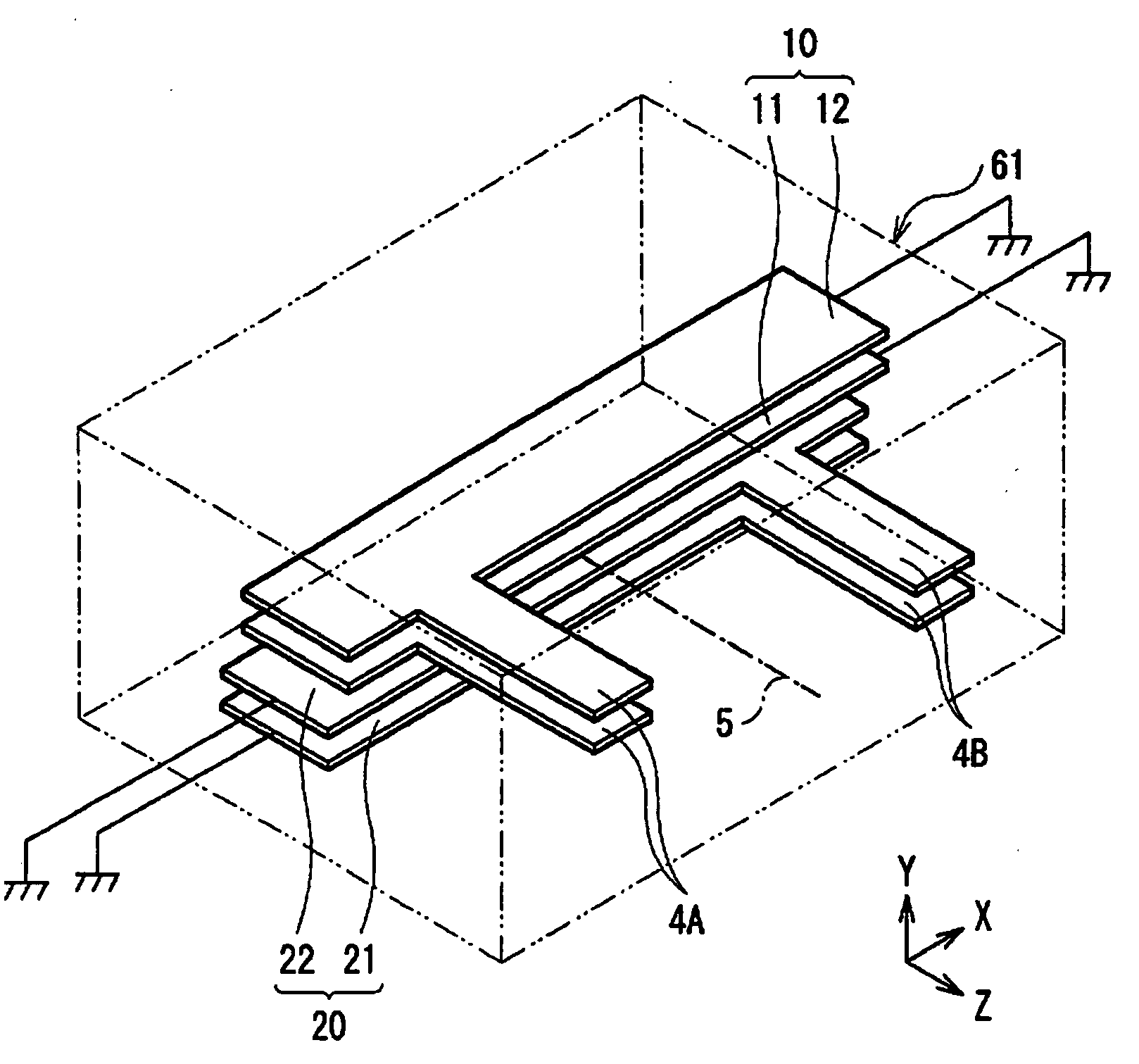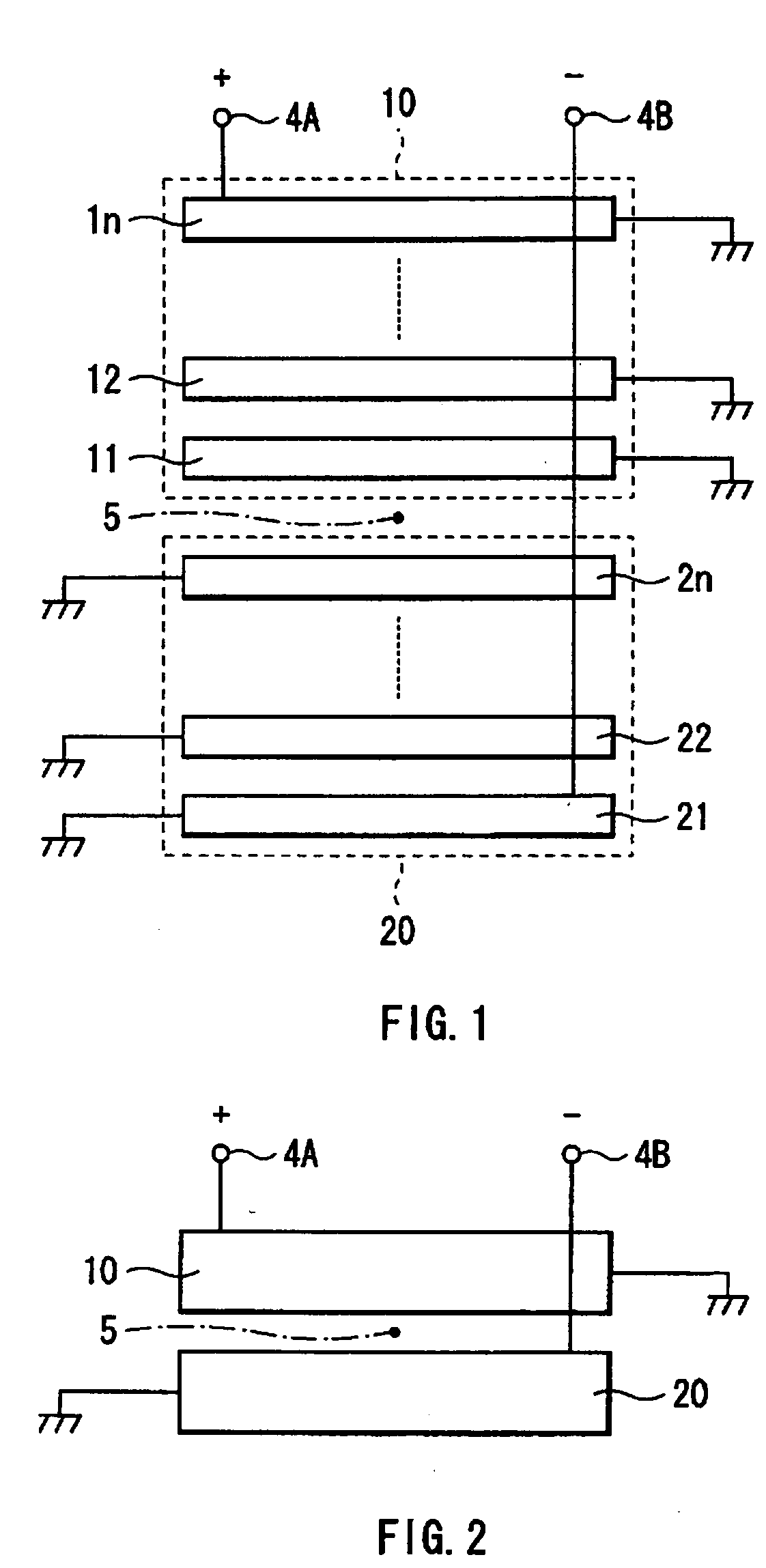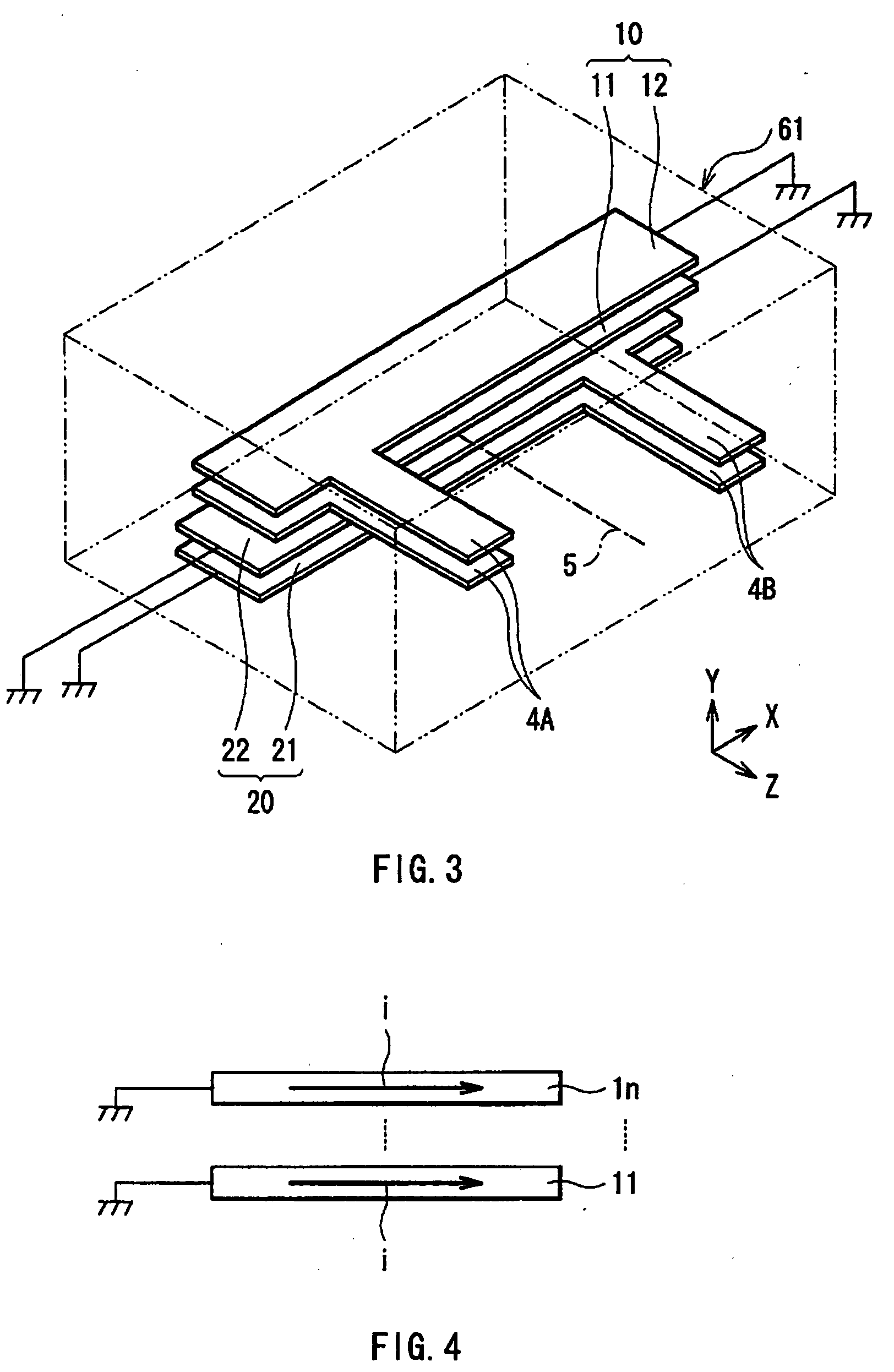Stacked resonator and filter
a resonator and filter technology, applied in the field of stacking resonators, can solve the problems of reducing the amplitude balance and phase balance at the time of balanced output, failing to obtain the desired characteristics, and difficulty in miniaturization, so as to reduce the loss of conductors, facilitate miniaturization, and increase the conductor thickness
- Summary
- Abstract
- Description
- Claims
- Application Information
AI Technical Summary
Benefits of technology
Problems solved by technology
Method used
Image
Examples
first preferred embodiment
[0056]First, a stacked resonator according to a first preferred embodiment of the present invention will be described. FIG. 1 illustrates a basic configuration of the stacked resonator of the present embodiment. FIG. 2 illustrates an equivalent configuration of the stacked resonator in the present embodiment. This stacked resonator can be used as a component constituting, for example, an antenna or a filter. This stacked resonator has a pair of quarter-wave resonators 10 and 20 which are interdigital-coupled to each other, and a pair of balanced terminals 4A and 4B which are connected to the resonators 10 and 20, respectively.
[0057]One quarter-wave resonator 10 is constructed of a plurality of conductor lines 11, 12, . . . 1n which are stacked and arranged so as to establish a comb-line coupling. The plurality of conductor lines 11, 12, . . . 1n are vertically adjacent to each other, and stacked and arranged with predetermined spaced intervals, and they are also arranged so that the...
second preferred embodiment
[0087]A stacked resonator according to a second preferred embodiment of the present invention will next be described. The same reference numerals have been used as in the above-mentioned first preferred embodiment for substantially identical components, with the description thereof omitted.
[0088]FIG. 12 illustrates a basic configuration of the stacked resonator of the second preferred embodiment. FIG. 13 illustrates an equivalent configuration of the stacked resonator in the second preferred embodiment. The stacked resonator according to the first preferred embodiment is provided with a set of the pair of quarter-wave resonators 10 and 20, whereas the stacked resonator according to the second preferred embodiment is provided with a plurality of pairs of quarter-wave resonators, which are configured in a multistage. The configuration example of FIG. 12 is provided with two sets of one pair of quarter-wave resonators 10 and 20, and the other pair of quarter-wave resonators 110 and 120...
third preferred embodiment
[0094]A third preferred embodiment of the present invention will be described below. The present embodiment describes a filter using the stacked resonator according to the first preferred embodiment mentioned above. The same reference numerals have been used as in the above-mentioned first preferred embodiment for substantially identical components, with the description thereof omitted.
[0095]FIG. 16 illustrates a basic configuration of the filter in the third preferred embodiment. FIG. 15 illustrates an equivalent configuration of the filter in the third preferred embodiment. The present embodiment describes taking as example a filter of unbalanced input / balanced output type or balanced input / unbalanced output type, having a balanced terminal only on either an input end side or an output end side, and having an unbalanced terminal on the other. This filter is provided with a first resonator 1, a second resonator 2, an unbalanced terminal 3 connected to the first resonator 1, and a p...
PUM
 Login to View More
Login to View More Abstract
Description
Claims
Application Information
 Login to View More
Login to View More - R&D
- Intellectual Property
- Life Sciences
- Materials
- Tech Scout
- Unparalleled Data Quality
- Higher Quality Content
- 60% Fewer Hallucinations
Browse by: Latest US Patents, China's latest patents, Technical Efficacy Thesaurus, Application Domain, Technology Topic, Popular Technical Reports.
© 2025 PatSnap. All rights reserved.Legal|Privacy policy|Modern Slavery Act Transparency Statement|Sitemap|About US| Contact US: help@patsnap.com



